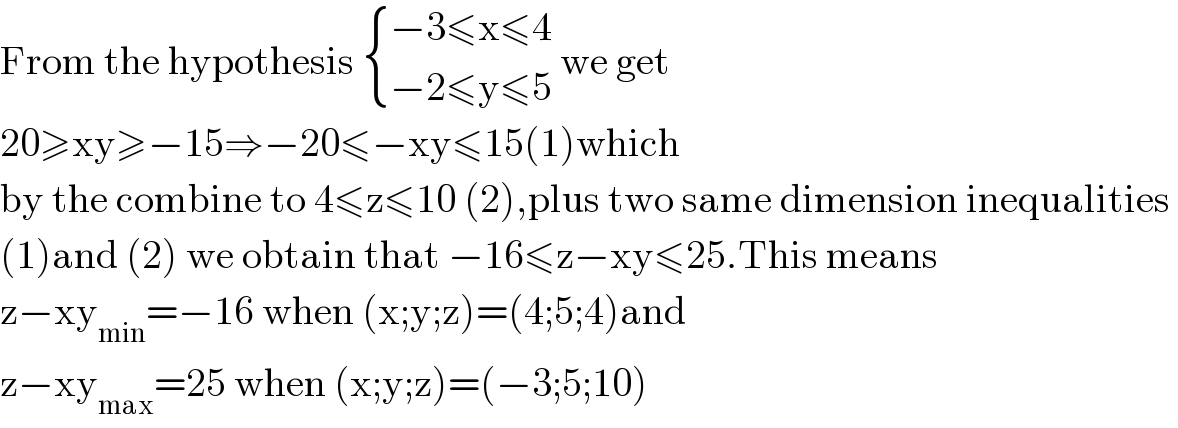
Question and Answers Forum
Question Number 97438 by john santu last updated on 08/Jun/20

Commented by bemath last updated on 08/Jun/20

Answered by 1549442205 last updated on 08/Jun/20

| ||
Question and Answers Forum | ||
Question Number 97438 by john santu last updated on 08/Jun/20 | ||
 | ||
Commented by bemath last updated on 08/Jun/20 | ||
 | ||
Answered by 1549442205 last updated on 08/Jun/20 | ||
 | ||
| ||